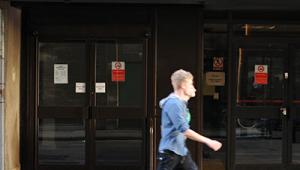National Audit Office researchers noted that the DfE still has not recovered £36m of £45m worth of ineligible payments made in the six years to 2015/16.
Payments become ineligible when students receiving them either drop out of their courses, do not to turn up at all, or fail to receive a qualification because of poor teaching or their inadequate English language skills.
Alternative providers are those that do not receive direct funding from the Higher Education Funding Council for England.
Although the number of ineligible payments has fallen as a proportion of all payments made to students attending alternative providers, from 4% in 2012/13 to 0.5% in 2015/16, more improvement is required, the NAO concluded, in the report released this month.
Robert Halfon, chair of the education committee, said: “While alternative providers should be supported, there is a duty to safeguard how taxpayers’ money is spent.”
He added: “£45m seems a horrendous amount of money to be misplaced, and we need to make sure that this continues to fall.”
At September 2017, there were 112 alternative providesr accessing support funding.
In 2015/16 the Student Loans Company paid out £417m to full-time students at alternative providers, the report found.
It also stated that the department does not have sufficiently timely and specific data to allow prompt measurement of the level of ineligible payments or analysis of trends.
Amyas Morse, head of the NAO, said: “The department is exerting stronger oversight and sanctioning under-performing providers but there remain issues to resolve, such as more timely identification of underperformance and ineligible payments.”
He added: “When the new Office for Students takes over responsibility for regulating alternative providers, it will need more specific, timely and reliable data to get early warning of issues emerging in the sector.”
The NAO study also found that the rate of students at alternative providers who drop out of their studies has fallen, thanks to more regulation, but it remains higher than in the rest of the higher education sector.
Between 2012/13 and 2014/15 the non-continuation rate reduced from 38% to 25%, but remains three percentage points higher than the sector benchmark, and 15 percentage points higher than for the rest of the higher education sector.
A DfE spokesman said: “We welcome the NAO report and are pleased that it acknowledges the department’s improved regulation of the sector to ensure quality and value for money.
“This oversight will be strengthened further by the new Office for Students, which has regulatory powers to hold institutions to account.”
The Office for Students will be fully operational from April next year.











